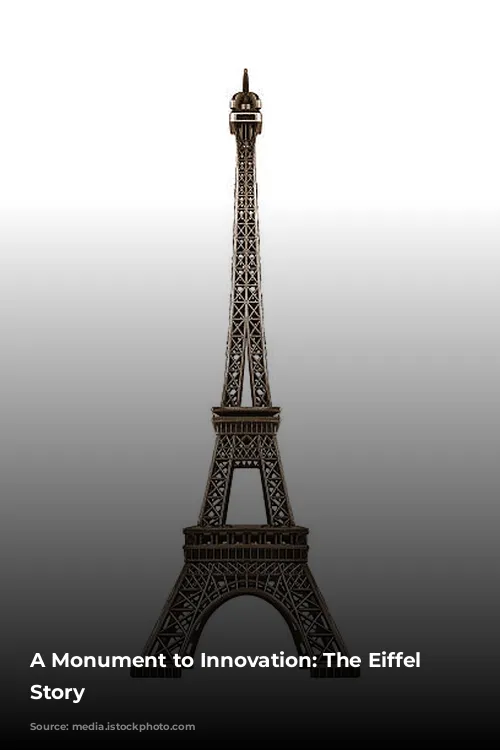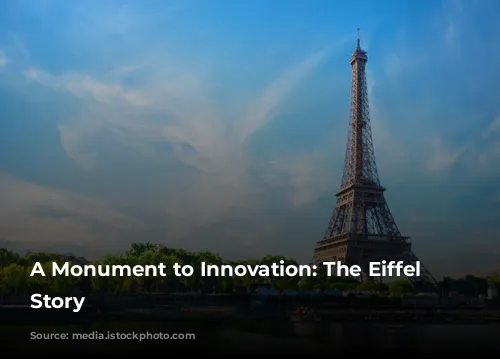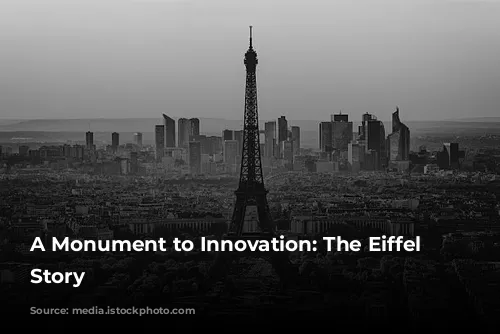The Eiffel Tower: A Parisian Icon
Standing tall as one of the world’s most recognizable landmarks, the Eiffel Tower is much more than just a beautiful structure. It’s a testament to human ingenuity, a symbol of Parisian charm, and a piece of history that continues to fascinate millions. But what was the purpose behind its construction, and what makes this tower so special?

The Tower’s Origins: An International Exposition
The year was 1889, and France was preparing to celebrate the centennial of the French Revolution. To mark this momentous occasion, the government organized the International Exposition of 1889, a grand exhibition showcasing the latest advancements in technology and art. To create a memorable entrance for this grand celebration, a design competition was held. Out of over 100 submissions, the Centennial Committee selected the design of renowned bridge engineer Gustave Eiffel, who would forever be associated with the tower that bears his name.
The Eiffel Tower was initially conceived as a gateway to the exhibition, a bold statement of French industrial ingenuity. It became a symbol of the nation’s progress and its ambition to be at the forefront of innovation.

A Symbol of Parisian Charm: More Than Just a Gateway
While the Eiffel Tower served as the entrance to the exposition, its significance extended far beyond this initial function. It quickly became a symbol of Paris itself, its distinctive silhouette capturing the essence of the city’s charm and romance. Today, it stands as a powerful representation of the Parisian spirit, attracting tourists from all corners of the globe.
The Eiffel Tower is also known for its captivating lighting displays, which have become a nightly spectacle. Often used to commemorate major world events, the tower’s twinkling lights serve as a reminder of its universal appeal and its ability to connect people across cultures and continents.

Built to Last: A Masterpiece of Engineering
The Eiffel Tower’s Construction:
The Eiffel Tower is a marvel of engineering, built almost entirely from open-lattice wrought iron. Gustave Eiffel employed his profound knowledge of metal arch and truss structures to create a lightweight yet incredibly strong framework, foreshadowing a new era in civil engineering and architectural design. This innovative design, a testament to his genius, allowed for a structure that was both graceful and robust.
Location and Dimensions:
The Eiffel Tower stands proudly on the Champs de Mars, in the 7th arrondissement of Paris. Situated on the Left Bank of the Seine, this prestigious neighborhood is home to many other famous attractions, including the Musée d’Orsay and the Rodin Museum.
The tower’s imposing height of 300 meters (984 feet) was a feat of engineering for its time. Its base measures 5 meters (17 feet) tall, and its television antenna adds an additional 30 meters (98 feet), reaching a total elevation of 330 meters (1,083 feet). It held the title of the tallest structure in the world until the completion of the Chrysler Building in New York City in 1929.

A Legacy of Innovation and Enduring Charm
The Eiffel Tower is more than just a monument; it is a symbol of human ingenuity, a testament to the power of engineering, and a source of inspiration for generations to come. Its enduring charm, its captivating presence on the Parisian skyline, and its ability to evoke emotions of awe and wonder continue to make it one of the most beloved landmarks in the world.










